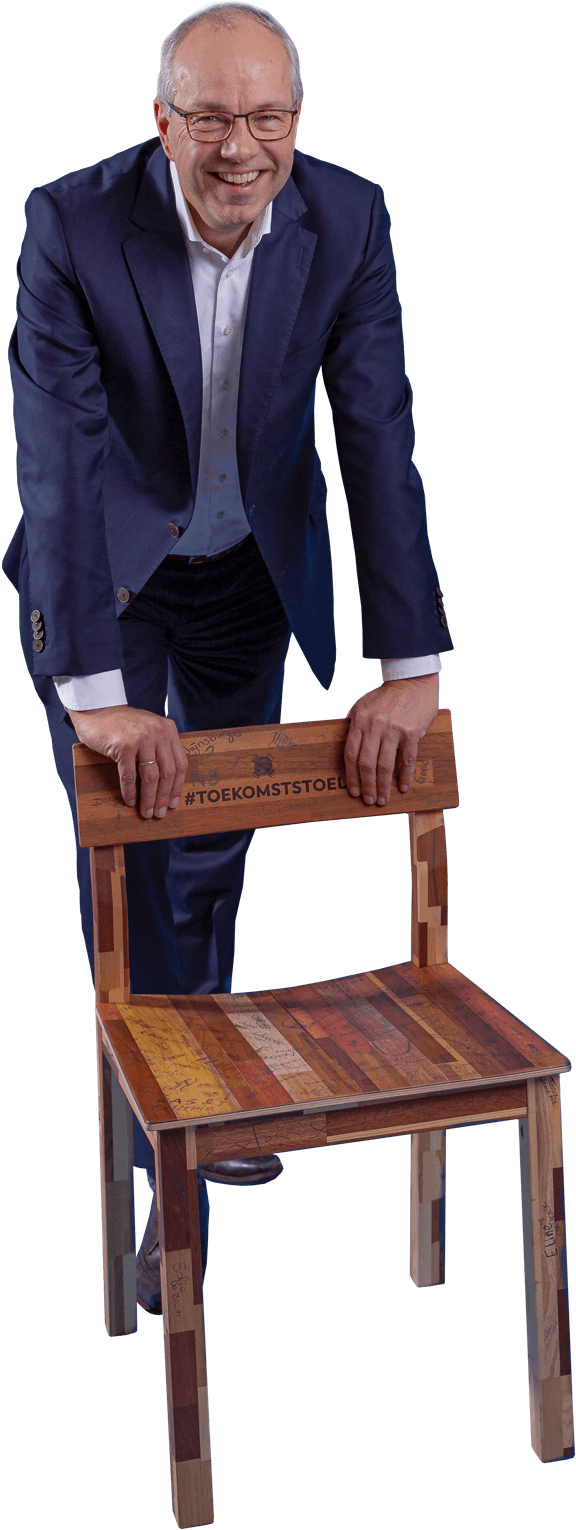
Interview
Van Oord’s white paper makes a bold statement about accelerating the energy transition. Why do we want to help decarbonise the world’s energy supply? Our five questions for CEO Pieter van Oord delve into the company’s sustainable mindset.
Scroll down to read more

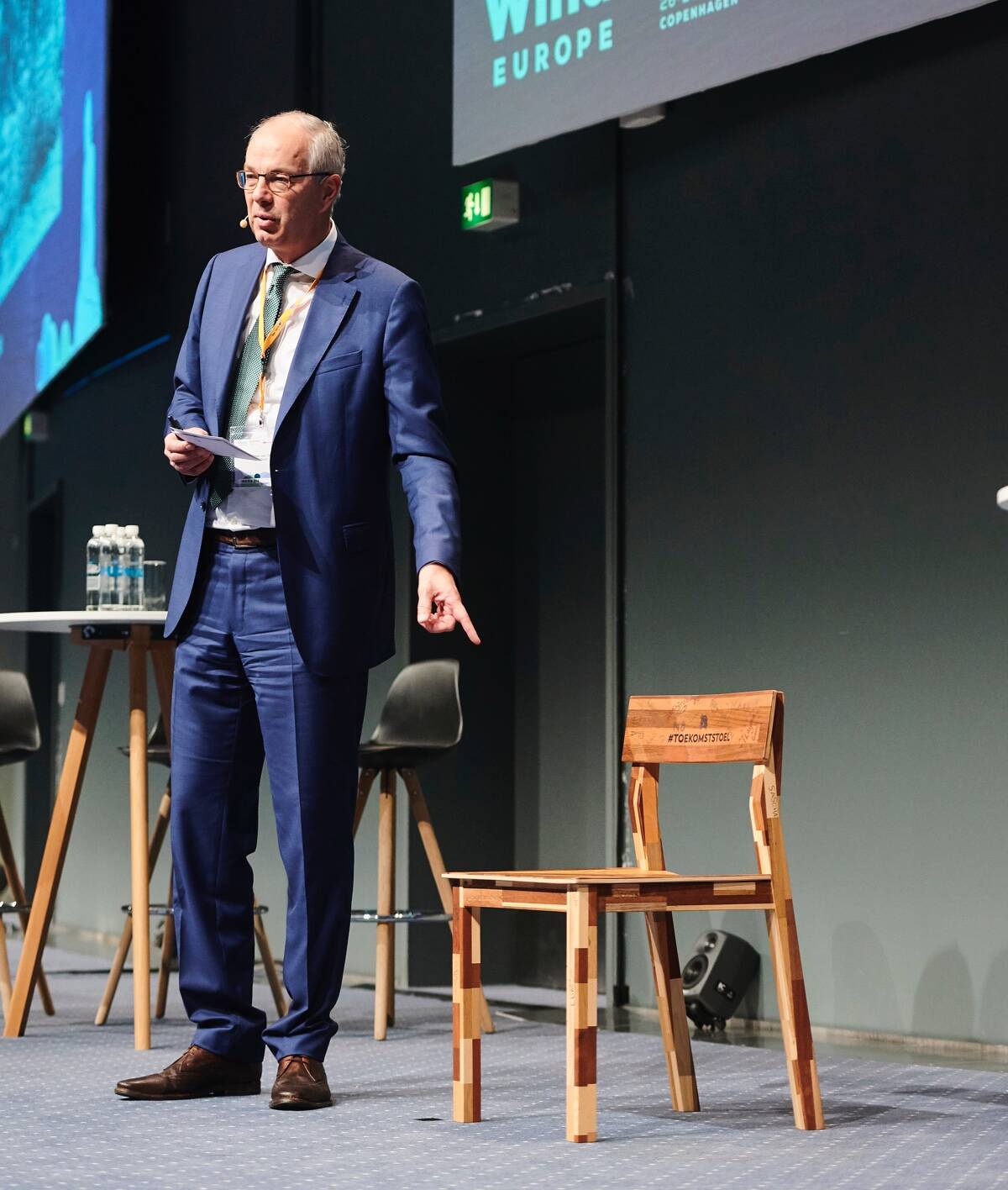
What motivates you to contribute to a sustainable future?
As part of our 150th anniversary celebrations in 2018, we asked our employees’ children to come up with ideas for what we should do in the next 150 years. As a reminder, they gave me a chair decorated with all their names and ideas. One of the ideas is to create a new energy system based on renewable sources. These children are the future! They will have to live in the world that we leave behind for them. The chair is my daily reminder of what we need to do. How?
In our white paper, we pledge to contribute actively to accelerating the energy transition. We are going to accomplish this by facilitating among others the large scale roll-out of offshore wind energy. That means investing in vessels, investing in people and investing in the value chain. In a way, we are developing a new economy.
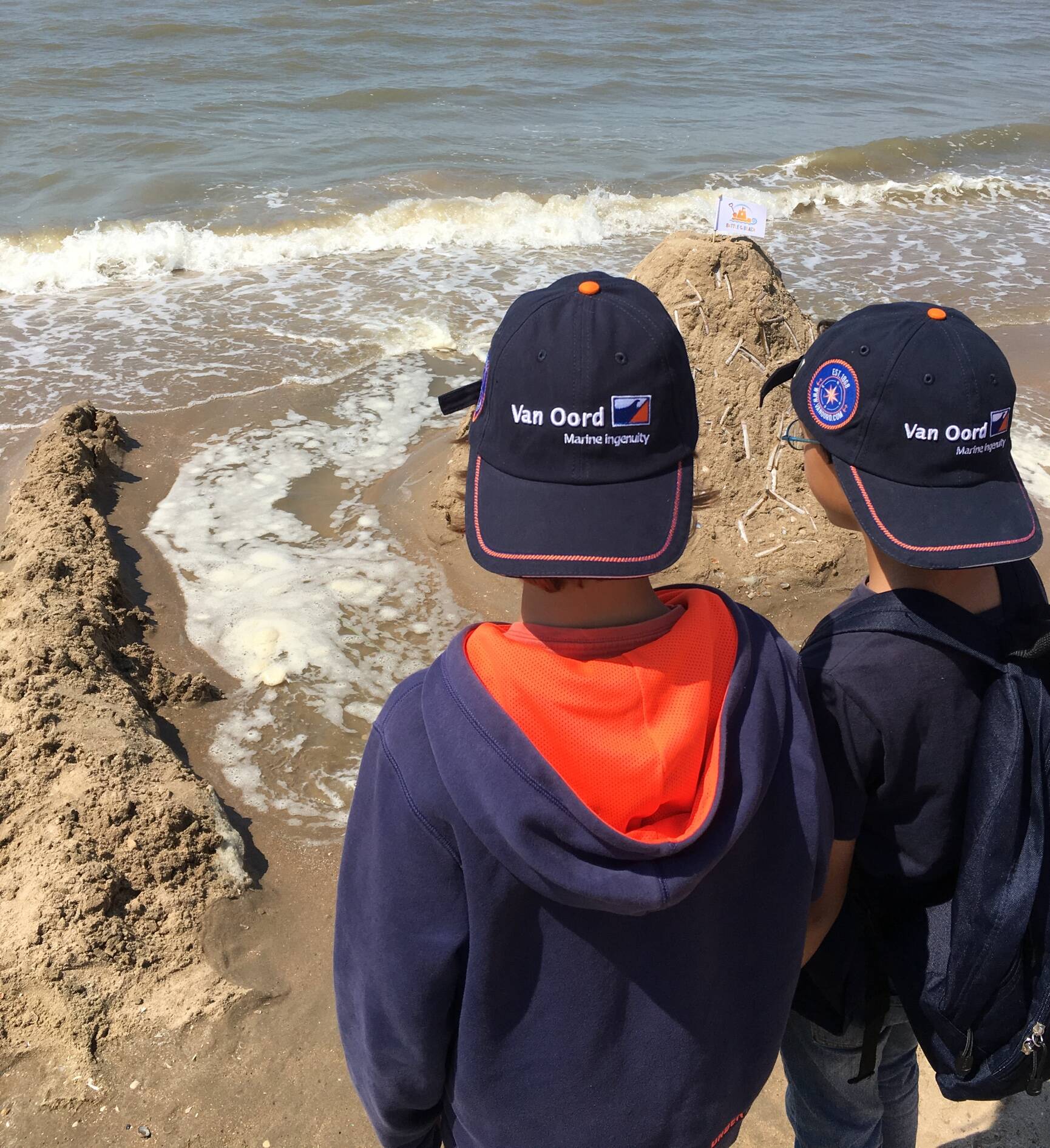
This year was the 26th annual summit in Glasgow (COP26). Van Oord had the opportunity to attend. Why do you want to be involved in COP?
Let’s go back to 2015. That year the Paris Agreement was born during COP21, led by former Executive Secretary of the United Nations Framework Convention on Climate Change, Christiana Figueres. In 2018 Christiana gave a powerful speech during the celebration of Van Oord’s 150th anniversary. She emphasized the need for action to limit the effects of climate change.
Van Oord have responded to her call for action by developing the Climate Adaptation Action Plan. The goal is to share our expertise in coastal resilience to accelerate climate adaptation action and also to extend our global leadership and reputation in this field. COP26 was the perfect place to do just that.

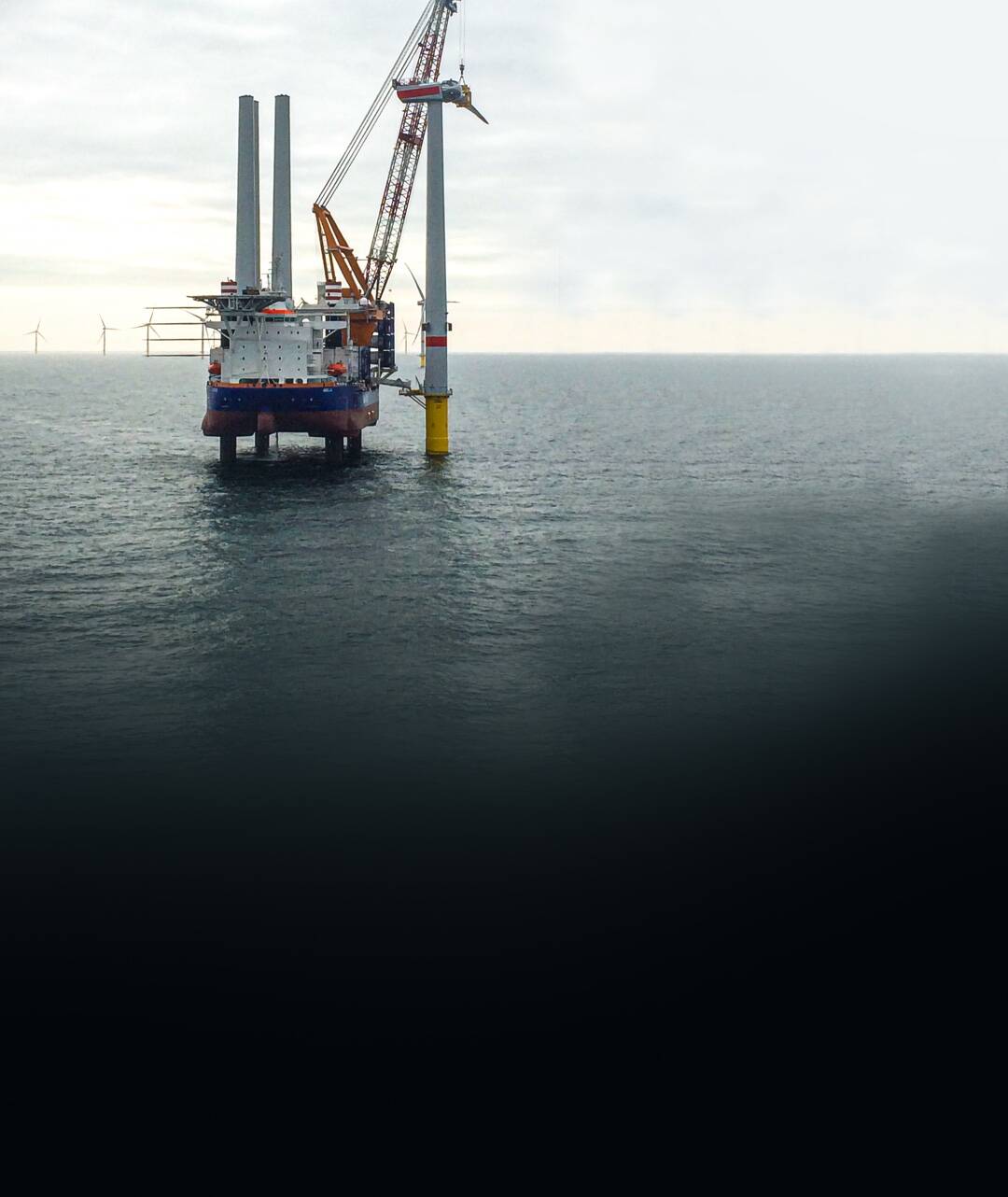
Which sustainable project or accomplishment are you most proud of and why?
Personally, I consider the Gemini offshore wind park a true milestone. It is the perfect example of how Van Oord has been a first-mover in the offshore wind market and the sustainable impact that Van Oord creates.
At the Gemini project Van Oord was both a co-investor and contractor for the largest Engineering Procurement and Construction contract in our history. Given its key role in the Gemini project, Van Oord has set out to understand and measure the value for the environment and for society. For this purpose Van Oord and KPMG applied KPMG’s True Value methodology. Watch the animation video to learn about how Van Oord created societal value while doing business.
I am proud of many thing we achieve at Van Oord. Another topic that comes to my is the introduction of three LNG (Liqified Natural Gas) hoppers to our fleet. Because of this investment we will gain more experience how to use LNG as an alternative fuel in this category of dredging equipment.
The Gemini project
Facts & figures
2.6 terawatt hour electricity generated per year
green energy to almost 800,000 households
reduces carbon emissions by 1.25 million tonnes per year




Van Oord has more than 5,000 employees. How do you get them to engage with the company’s sustainability targets?
In 2019, Van Oord launched its sustainability programme, S.E.A., which stands for Sustainable Earth Actions. They are the sustainable activities that Van Oord undertakes to generate new opportunities in our field and to help build a sustainable future. Today, next year, and far beyond.
Awareness is the first step towards changing behaviour. At our S.E.A. talks, we invite employees to think about sustainability issues. I encourage everyone to consider the impact of making small changes to their lifestyle and work setting.
All these small steps added together can have a major impact on environmental pollution. We also offer our employees ‘green’ benefits, such as a special deal on solar panels. They can purchase a complete solar energy package at a discount. These are benefits designed to encourage our employees to adopt sustainable behaviour.
Leaving scope for innovation gives our company access to new, sustainable solutions. Van Oord cooperates closely with industry partners and innovation platforms such as PortXL to pool knowledge and accelerate the development of new ideas.
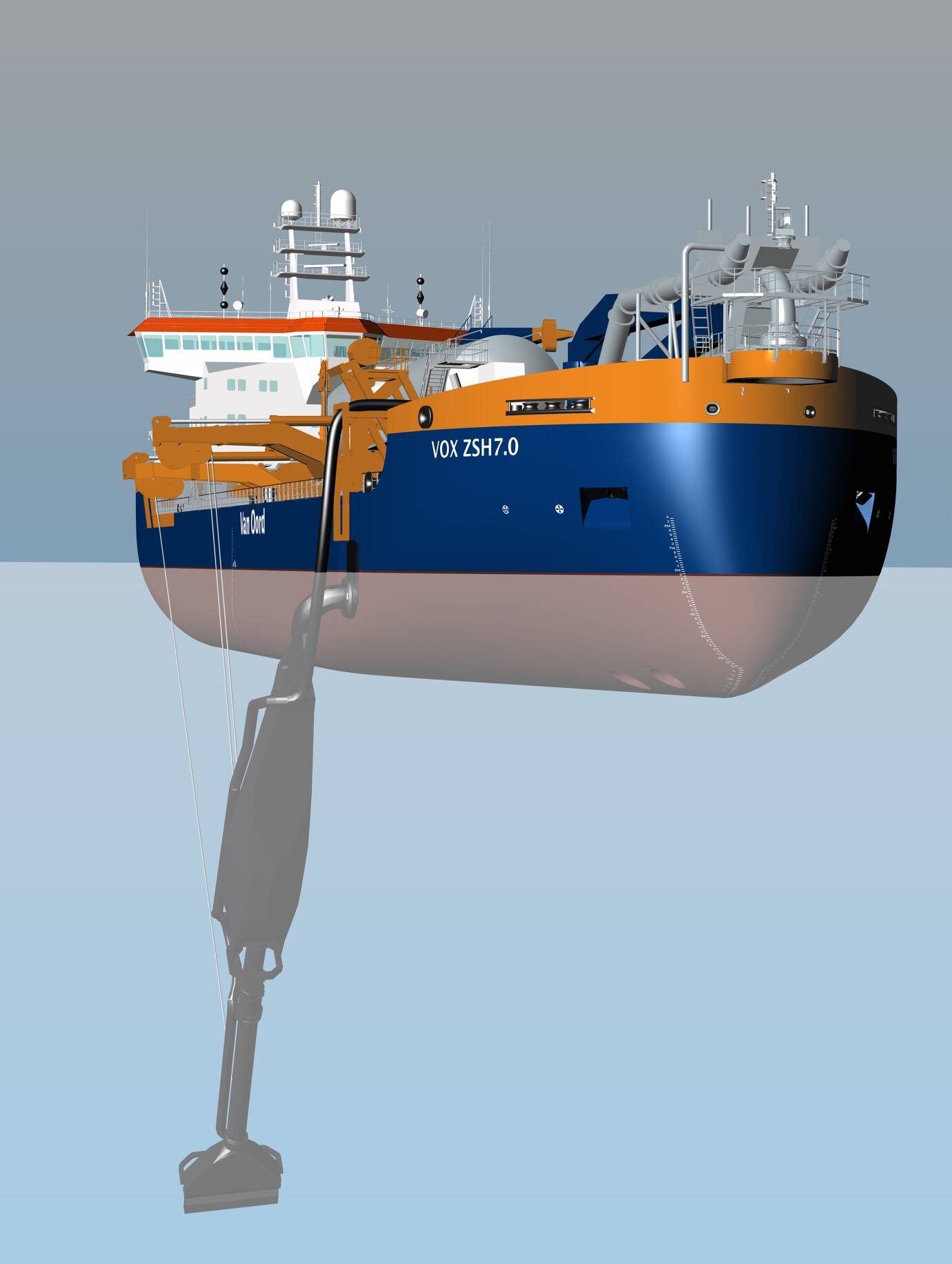
95% of Van Oord’s carbon footprint is linked to its fleet? How are you reducing that footprint?
Many of the technologies developed to improve fleet emissions are meant for average, long-distance shipping. They are often difficult to apply to Van Oord’s fleet, which operates in a niche market near the coast. So that’s why we have to come up with our own solutions. We are working on all kinds of systems to address our carbon footprint. But also look at other emissions like NOx. One thing we do is to improve our operational efficiency. Cruising at economic speed is a customary way of reducing overall fuel consumption.
Obviously, you can tackle fuel economy right from the start, with the vessel’s design. We spend a lot of time analysing the flow around ships and offshore structures. We use this information to minimise vessel resistance and maximise hopper capacity.
We are working with Shell to test biofuel in the fleet. Biofuels are solutions that can be implemented in the short and medium term. You can blend them with conventional fuels without having to make major engine modifications. Vessel carbon emissions are 40% lower with biofuel than with conventional fuel.
There is not one, overarching solution to the problem of vessel fuel emissions, but we are doing everything we can to make our fleet more sustainable. For example, we are having three new hopper dredgers built that can operate on LNG, and that will yield a substantial reduction in carbon emissions.
I want to emphasise that we are fully committed to the future emissions strategy of the International Maritime Organisation (IMO). Reducing our CO2 footprint is guided by our SEA programme. After all, climate change is driving the energy transition of our own operations, equipment, activities and supply chain. Van Oord has the ambition to operate carbon neutral by 2050.
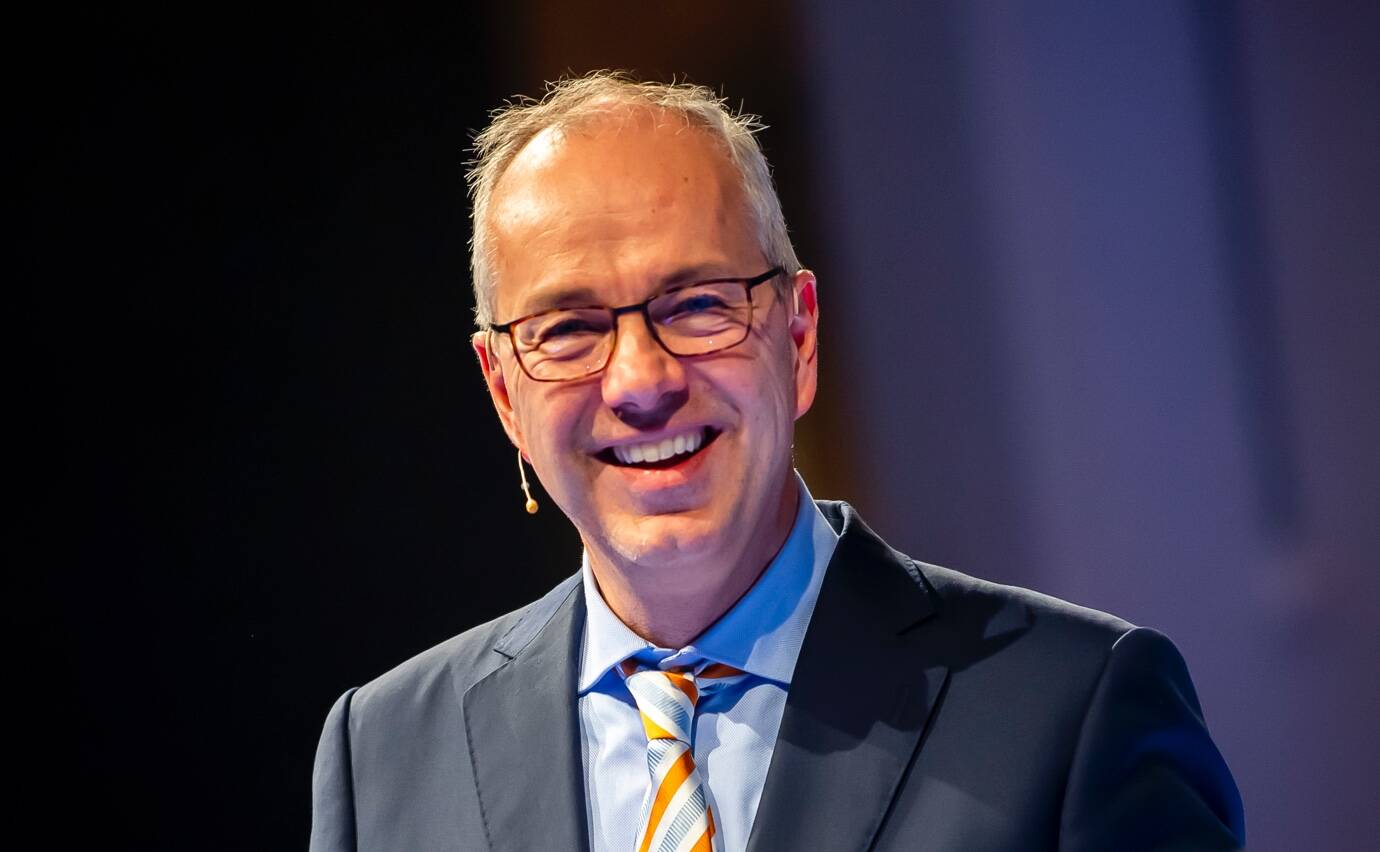

back to top
The Gemini project
Facts & figures
2.6 terawatt hour electricity generated per year
green energy to almost 800,000 households
reduces carbon emissions by 1.25 million tonnes per year
This year was the 26th annual summit in Glasgow (COP26). Van Oord had the opportunity to attend. Why do you want to be involved in COP?

95% of Van Oord’s carbon footprint is linked to its fleet? How are you reducing that footprint?
Van Oord has more than 5,000 employees. How do you get them to engage with the company’s sustainability targets?



Which sustainable project or accomplishment are you most proud of and why?
Let’s go back to 2015. That year the Paris Agreement was born during COP21, led by former Executive Secretary of the United Nations Framework Convention on Climate Change, Christiana Figueres. In 2018 Christiana gave a powerful speech during the celebration of Van Oord’s 150th anniversary. She emphasized the need for action to limit the effects of climate change.
Van Oord have responded to her call for action by developing the Climate Adaptation Action Plan. The goal is to share our expertise in coastal resilience to accelerate climate adaptation action and also to extend our global leadership and reputation in this field. COP26 was the perfect place to do just that.
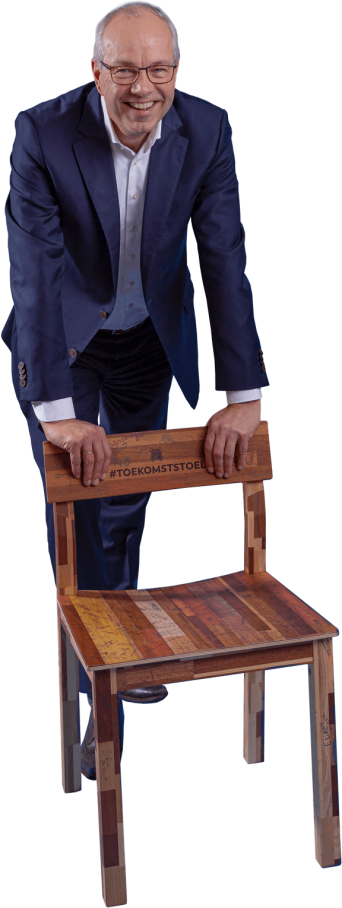
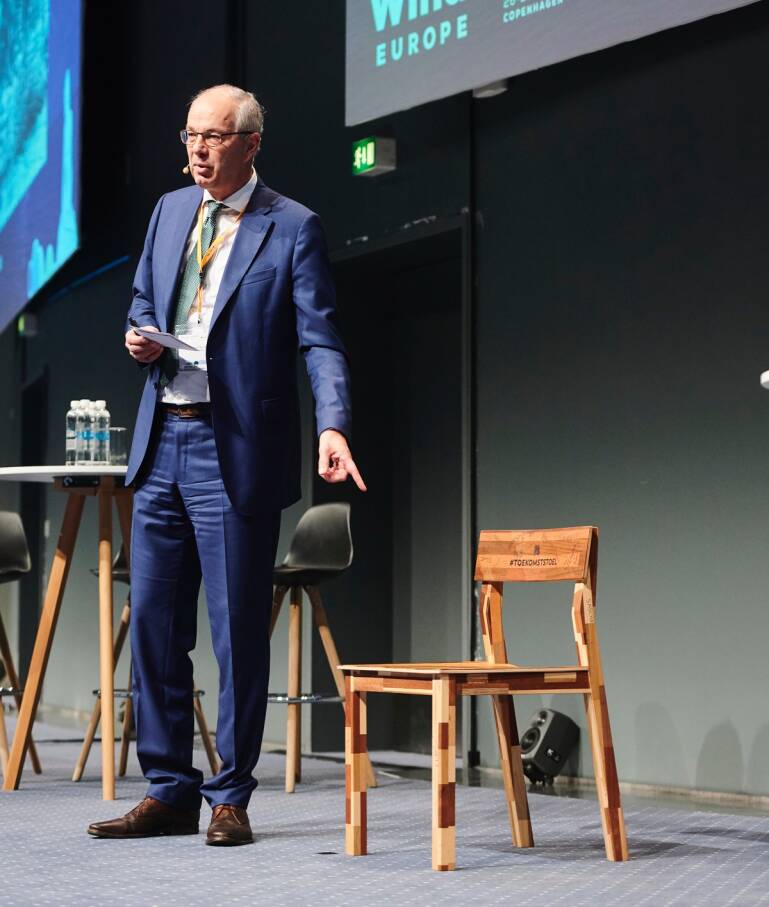
Many of the technologies developed to improve fleet emissions are meant for average, long-distance shipping. They are often difficult to apply to Van Oord’s fleet, which operates in a niche market near the coast. So that’s why we have to come up with our own solutions. We are working on all kinds of systems to address our carbon footprint. But also look at other emissions like NOx. One thing we do is to improve our operational efficiency. Cruising at economic speed is a customary way of reducing overall fuel consumption.
Obviously, you can tackle fuel economy right from the start, with the vessel’s design. We spend a lot of time analysing the flow around ships and offshore structures. We use this information to minimise vessel resistance and maximise hopper capacity.
We are working with Shell to test biofuel in the fleet. Biofuels are solutions that can be implemented in the short and medium term. You can blend them with conventional fuels without having to make major engine modifications. Vessel carbon emissions are 40% lower with biofuel than with conventional fuel.
In 2019, Van Oord launched its sustainability programme, S.E.A., which stands for Sustainable Earth Actions. They are the sustainable activities that Van Oord undertakes to generate new opportunities in our field and to help build a sustainable future. Today, next year, and far beyond.
Awareness is the first step towards changing behaviour. At our S.E.A. talks, we invite employees to think about sustainability issues. I encourage everyone to consider the impact of making small changes to their lifestyle and work setting.
Personally, I consider the Gemini offshore wind park a true milestone. It is the perfect example of how Van Oord has been a first-mover in the offshore wind market and the sustainable impact that Van Oord creates.
At the Gemini project Van Oord was both a co-investor and contractor for the largest Engineering Procurement and Construction contract in our history. Given its key role in the Gemini project, Van Oord has set out to understand and measure the value for the environment and for society. For this purpose Van Oord and KPMG applied KPMG’s True Value methodology. Watch the animation video to learn about how Van Oord created societal value while doing business.
I am proud of many thing we achieve at Van Oord. Another topic that comes to my is the introduction of three LNG (Liqified Natural Gas) hoppers to our fleet. Because of this investment we will gain more experience how to use LNG as an alternative fuel in this category of dredging equipment.
What motivates you to contribute to a sustainable future?
As part of our 150th anniversary celebrations in 2018, we asked our employees’ children to come up with ideas for what we should do in the next 150 years. As a reminder, they gave me a chair decorated with all their names and ideas. One of the ideas is to create a new energy system based on renewable sources. These children are the future! They will have to live in the world that we leave behind for them. The chair is my daily reminder of what we need to do. How?
In our white paper, we pledge to contribute actively to accelerating the energy transition. We are going to accomplish this by facilitating among others the large scale roll-out of offshore wind energy. That means investing in vessels, investing in people and investing in the value chain. In a way, we are developing a new economy.
Interview
There is not one, overarching solution to the problem of vessel fuel emissions, but we are doing everything we can to make our fleet more sustainable. For example, we are having three new hopper dredgers built that can operate on LNG, and that will yield a substantial reduction in carbon emissions.
I want to emphasise that we are fully committed to the future emissions strategy of the International Maritime Organisation (IMO). Reducing our CO2 footprint is guided by our SEA programme. After all, climate change is driving the energy transition of our own operations, equipment, activities and supply chain. Van Oord has the ambition to operate carbon neutral by 2050.
All these small steps added together can have a major impact on environmental pollution. We also offer our employees ‘green’ benefits, such as a special deal on solar panels. They can purchase a complete solar energy package at a discount. These are benefits designed to encourage our employees to adopt sustainable behaviour.
Leaving scope for innovation gives our company access to new, sustainable solutions. Van Oord cooperates closely with industry partners and innovation platforms such as PortXL to pool knowledge and accelerate the development of new ideas.
Van Oord’s white paper makes a bold statement about accelerating the energy transition. Why do we want to help decarbonise the world’s energy supply? Our five questions for CEO Pieter van Oord delve into the company’s sustainable mindset.
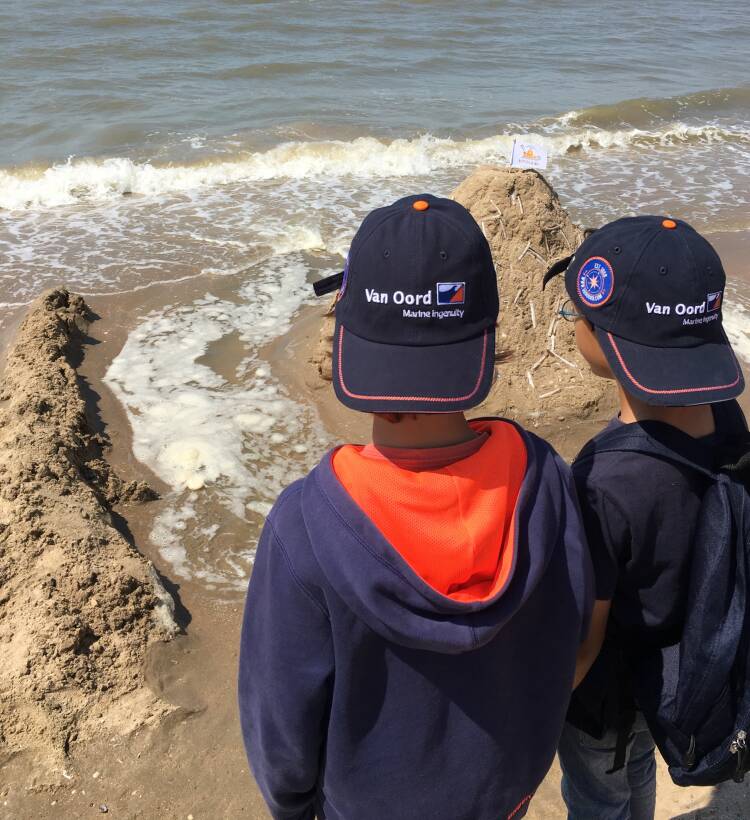
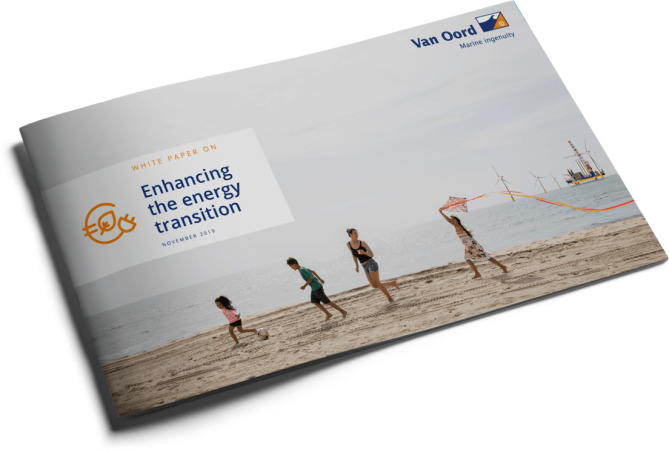


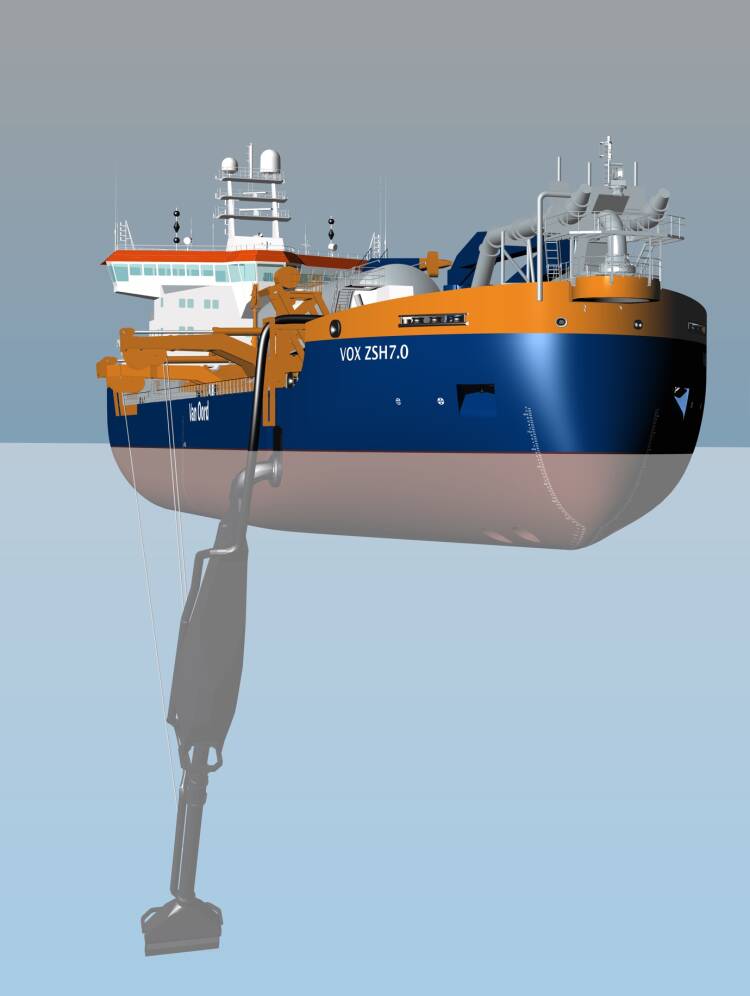

back to top








